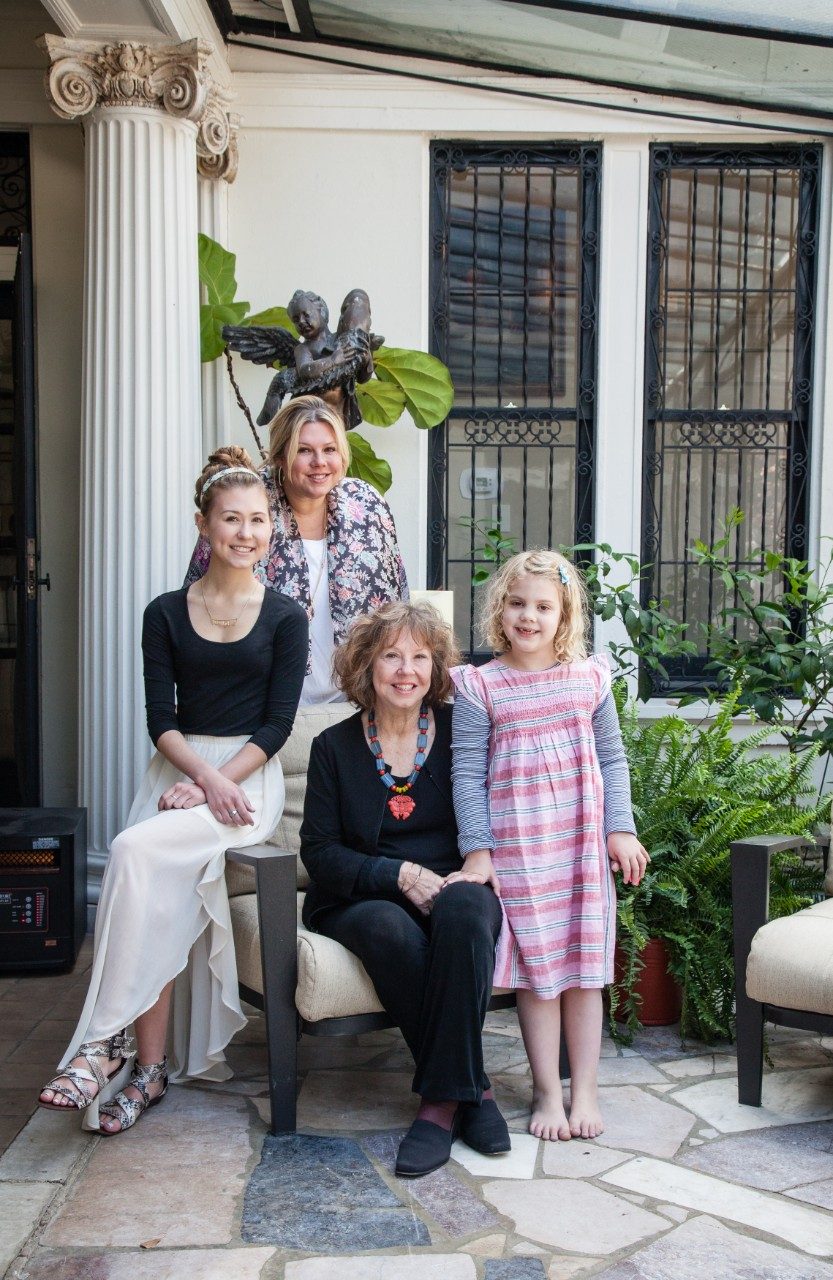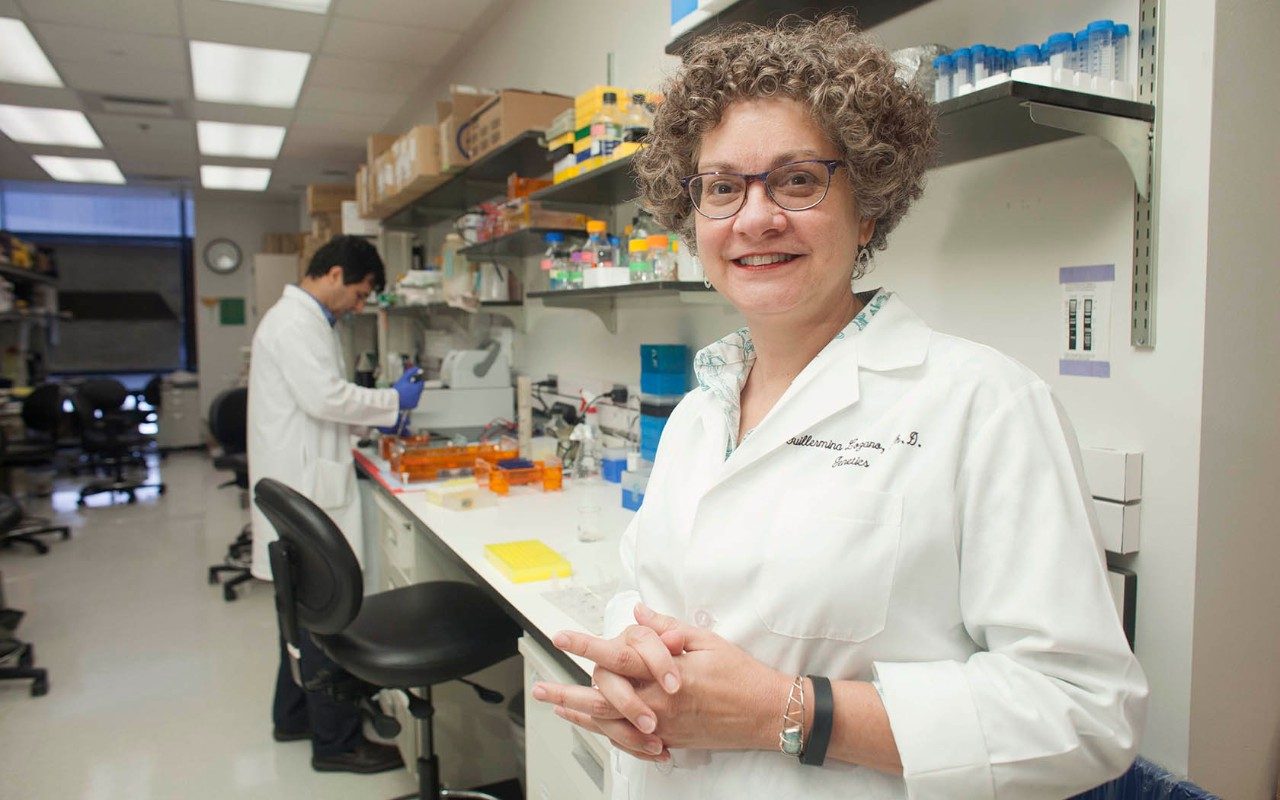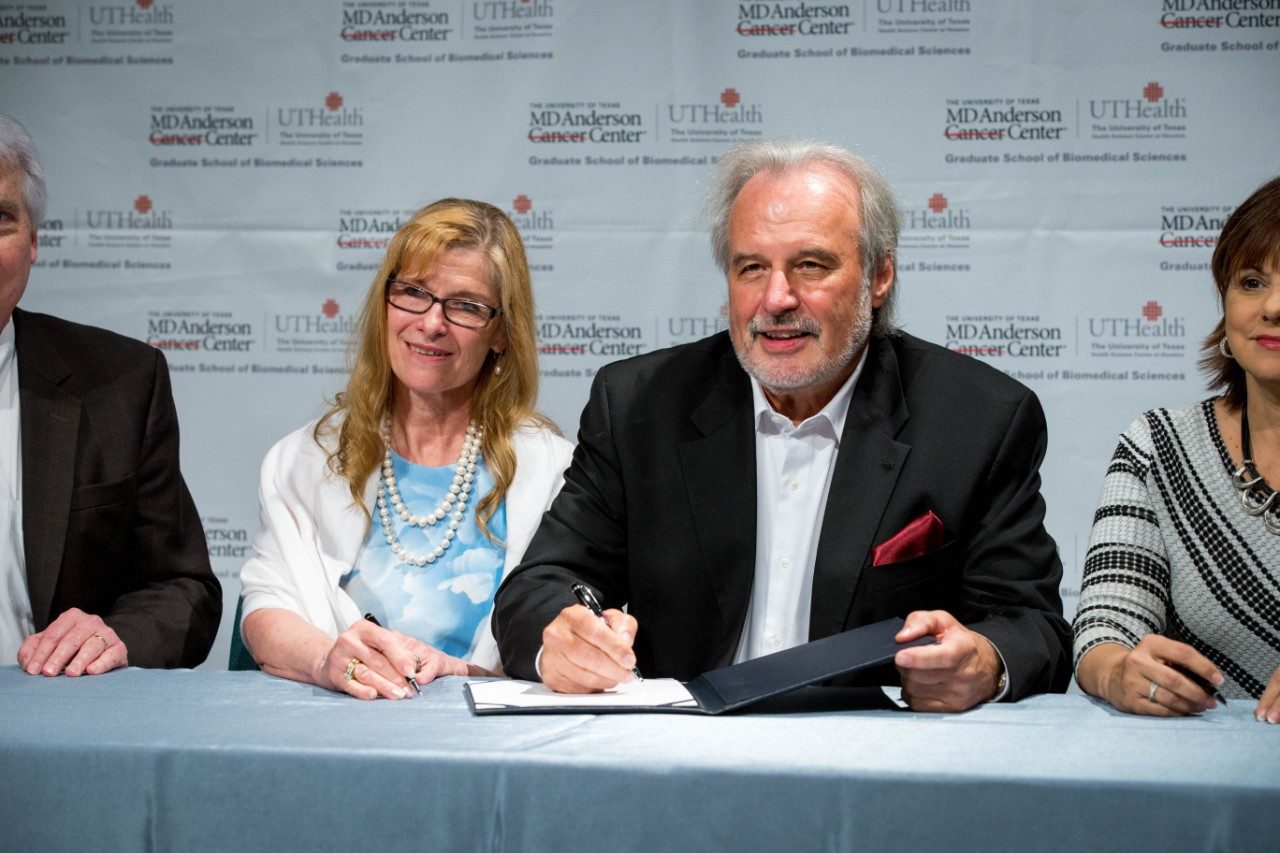Lymphoma survivor supports cancer research at MD Anderson
Lymphoma survivor supports innovative cancer research project to find the driving force of tumor cells
In 2002, when print industry executive George Diamantis had a routine physical exam for a life insurance policy, he received unexpected news: There was a mass on his aorta, and he needed a CT scan. He went to a hospital in Chattanooga, Tennessee, where the prognosis was a slow-growing lymphoma - a 10-15% chance of beating it.
Diamantis, who recently retired as chairman of National Print Group, wanted a second opinion. His doctor, who had trained at MD Anderson, suggested he go to MD Anderson. Diamantis had an appointment within a week.
“By the luck of the draw, I was assigned to Dr. Felipe Samaniego, who said it was the correct diagnosis, but my chances were 80%,” he says. “I asked, ‘80% living or dying?’ and he said, ‘Living!’ After a heart scan, he said it was 90%.”
Running a business, Diamantis didn’t want to spend much time away, so he asked if he could get his treatment back home. Samaniego, associate professor of Lymphoma/Myeloma, described the treatment and protocol to his doctor in Chattanooga and shipped the drug to him for next-day delivery.
Diamantis had three or four treatments and 24 rounds of radiation, but with his trust in MD Anderson, he decided to return to Houston. He went through 12 rounds of chemotherapy and took Rituxan, before Samaniego pronounced him completely clear of the cancer.
“Everyone at MD Anderson was encouraging, hopeful and upbeat,” says Diamantis, of McDonald, Tennessee. “What sets MD Anderson apart is its professionalism and understanding of what people are going through.”
He and his wife, Jane, longtime supporters of Samaniego’s research, recently committed $60,000 to his “queen bee” study, which aims to find the cause of tumor growth.
“Just as killing the queen bee leads to the demise of the hive, destroying the cancer cells should stop the tumor from renewing itself. Curing cancer through the queen bee theory is the driver of many tumor models,” Samaniego says. “George and Jane's donation will generate enough information to get us more grants, which are critical in our efforts to finding a cure.”


















